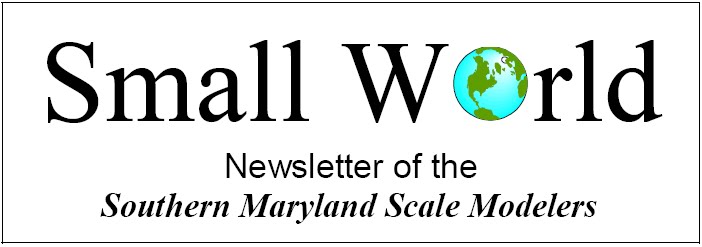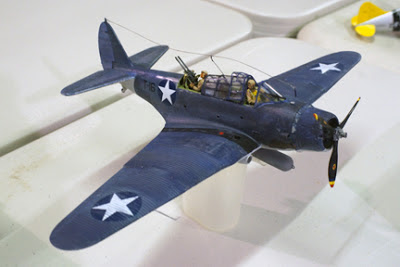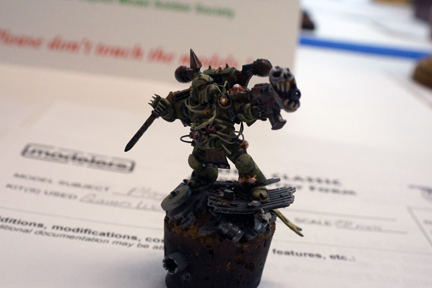1/144 F/A-18E “Digi-Hornet”
VFA-137 “Kestrels”
CAG Aircraft 2011
By Vince Mankowski
As most
of you know, my wife and I are looking to move to Spokane, WA in the (very)
near future. To make this possible I
have been looking for work very hard for the last several months, so hard in
fact that I haven’t touched a model on my workbench since early February this
year! Since I have been running into
road blocks (3,000 mile distance not withstanding) and growing frustrated in my
search to the point a week ago that I simply said “To heck with it, I’m going
to take a break and build a model!”
Rooting
around in my stash, I wanted something I could build ‘out of the box’
relatively quickly that would have a unique or striking paint scheme to
it. My eyes fell to the 1/144 Revell
F/A-18E Super Hornet kit (number 03997).
Revell 1/144 F/A-18E
Super Hornet box art
I just happened to have the DXM decals for a ‘digital
camouflage’ Super Hornet on hand. The
decals represent a “Commander, Air Group” or CAG aircraft from the VFA-137
Kestrels painted this way in 2011 in both an ‘early’ and a ‘later’ scheme. The decision was made to proceed with this
model, in the “digi-hornet” scheme.
DXM 1/144 Decal Set
I
started by cutting the parts to the model from all but one or two of their
sprue attachment points and cleaning up the mold separation lines present on
them. Once they were cleaned up, I began
the initial painting for interior colors for the cockpit, wheel wells, intakes,
undercarriage and such. Some parts I
completely separated from the sprues and attached to toothpicks for
preparation.
Initial painting on
model parts
More initial painting
Once
the initial painting was done, I started by applying the decals (yes, DECALS!)
for the instrument panel and consoles in the cockpit. This was followed by some more painting to
complete the preparation for assembly.
Instrument panel and
console decals applied to the cockpit interior parts
I
followed the instructions for the most part, trapping the cockpit tub between
the fuselage top and bottom halves, constructing the intakes with fan face
along the fuselage, and attaching the nosecone to the fuselage assembly. I clamped everything nice and snug to prevent
any seam problems later. I can say
without reservation that this kit goes together very easily, and has great fit
throughout! There was very little in the
way of seam clean up that was required.
The intakes have small attachment areas to glue them together, and are a
little fiddly for folks who are not used to working in this small a scale, but
other than this ‘hazard of scale’, the kit went together apace and with no
troubles.
The
all-moving elevators are connected on the sprue by a plastic dowel that passes
through the fuselage so you can articulate them when construction is
finished. However, due to the scheme I
was applying and the fact that the colors are comprised of decals I chose to
clip the dowel and simply glue the elevators in after painting and decaling the
model. This was my only deviation from
the instructions.
Clamping the fuselage
together while the glue dries
Once
all of the major assembly was finished, I prepared the model for painting. I masked off the engine intakes and wheel
wells to preserve the flat white prepainting.
I also masked off the canopy and while the windscreen was permanently
glued in place, the canopy was lightly tacked in place using Ailene’s Tacky
Glue so I could separate it later and install it in the open position.
Ventral masking for
the paint job
Dorsal masking for
the paint job
Once I
had applied the overall Light Ghost Gray paint scheme, I let that dry for a
couple of days before coating the model in a gloss clear coat in preparation
for the decals. I also let the lacquer
gloss coat dry for a couple of days before starting the decal process.
Unmasked and ready
for decals
The DXM
set for this scale is unique in that it includes all the digital camouflage as
decals to apply over the single base color.
Now, that was unique, however it took some 30 decals just to apply the
paint scheme to the model… in 1/144 scale!
The only hard part was in the beginning, with the first decal applied
(right wing) as the alignment for the entire paint job relied on getting the
first decal right. The application
sequence fell out as: right wing, spine
(6 decals), left wing, right LERX (2 decals), left LERX (2 more), aft fuselage
(6 decals), forward fuselage (4 decals), nose (4 decals), vertical tail(s) (6
decals), and elevators (1 decal each). A
total of 34 decals just for the paint scheme!
Applying
digi-camouflage decals
Once
the color scheme was finished, then the aircraft and squadron markings had to
be applied and believe it or not, it took even more decals to accomplish
this. The regular markings included
items such as the “Navy” titles, squadron name on the spine, side numbers on
the nose and flaps, bureau numbers under the elevators, and national
insignias. The DXM decal sheet also
included some of the warning, safety, maintenance stencils and slime lights you
would normally only find on models in larger scales! All in all, I spent 3 nights applying decals
to this little beast, but when they were finished I think it looked absolutely
fantastic!
Squadron/aircraft
specific decals going on over the camouflage decals
I used
the Microscale decal setting solutions by putting the Set solution on the
decals while the glue softened after a dip in room temperature water. I applied the Sol solution to the spot on the
model where the decal was to be placed.
Using this approach everything snuggled down just beautifully into all
of the surface detail (note the photographs above carefully!). The DXM decals responded very well to the
Microscale products and did not melt, skew, or otherwise get damaged during the
process and I am very happy with the results achieved.
Once
the all of the decals were applied and left alone to cure over night, I started
the process of attaching all of the fiddly-bits to this model. Believe me when I say, that in 1/144 scale the
fiddly-bits are that much more fiddly when you have large hands and fingers.
Undercarriage and
pylons installed, tail flying surfaces installed, gear doors are next
Oh, yeah, and the
centerline tank is installed!
Gear doors, ejection
seat and canopy installed, almost there!
A penny for your
thoughts…
Carrier lights
painted with the end of a sharpened toothpick
Ejection seat with
tape belts
Low aspect photograph
of the finished model
High angle photograph
of the finished model
I
thoroughly enjoyed building this model.
I applied a light wash to the entire airframe to pick out surface
details. Once I cleaned up the excess
with a alcohol soaked cotton bud (or two, or three) the whole thing looked
really nice. I am contemplating adding
the ordnance under the wings. I painted
up the AIM-120C AAMRAM and AIM-9X Sidewinder missiles along with a pair of
GBU-31 JDAM bombs. I think I just may
add them after I get done absorbing the pleasure of finishing the first model
I’ve completed since well before Christmas 2012! I hope to not wait this long to finish
another model ever again!












































































